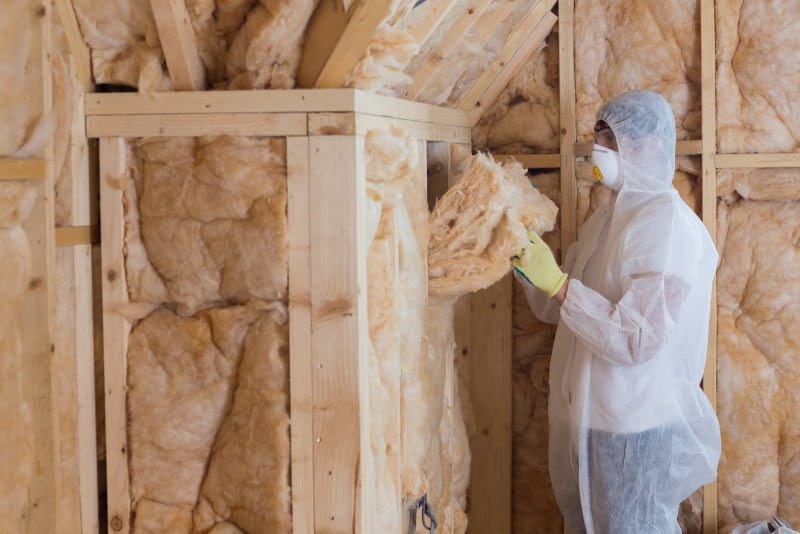There are many options when it comes to insulation for your home. It can be confusing to know which one is the best for your needs. In this article, we’ll discuss the different types of insulation and what they’re best for.
What is the Most Effective Insulation?
The most effective insulation for your home will depend on a number of factors, including the climate you live in, the type of home you have, and your personal preferences. However, some of the most popular insulation materials used in homes include fiberglass, cellulose, spray foam and mineral wool insulation.
How to Choose the Best Insulation for your Home
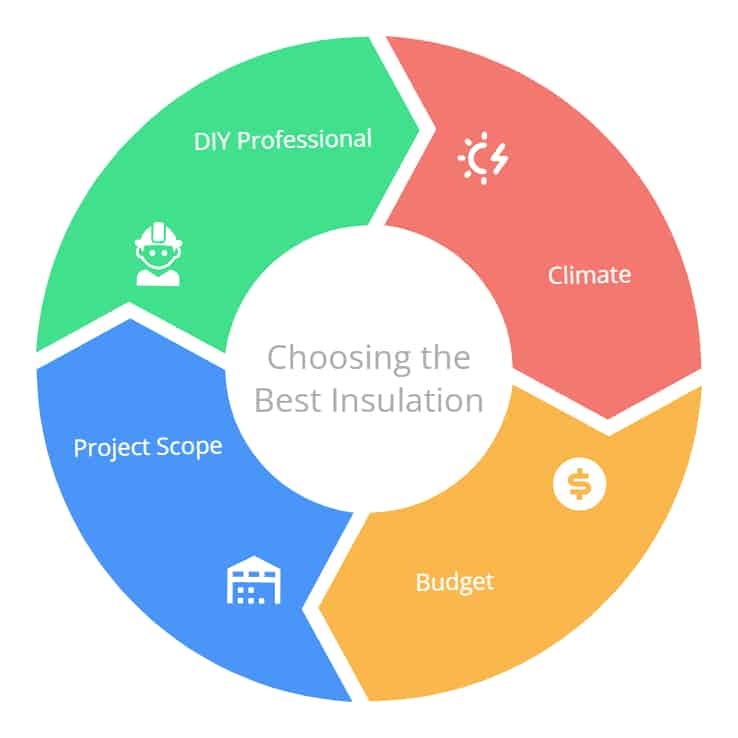
There are many factors to consider when choosing the best insulation for your home.
The most important factor is the climate in which you live. Insulation is rated by R-value, which measures its resistance to heat flow.
The higher the R-value, the more effective the insulation will be in your climate. Other factors to consider include the type of heating and cooling system you have, the type of construction of your home, and your budget.
Here is a breakdown of the different factors you may want to consider when it comes to choosing your home’s insulation:
Climate / Location
Different climates require different types of insulation in order to be effective.
For example, homes in cold climates need insulation that will keep heat in, while homes in warm climates need insulation that will keep heat out.
Your climate is also important so you know how to manage the airflow when you insulate your home.
Budget
There are a variety of insulation materials available on the market, each with its own unique set of costs associated with it.
Fiberglass insulation, for example, is typically one of the more inexpensive options available, while spray foam insulation tends to be on the more expensive side.
The cost of installation also varies depending on the type of insulation chosen, with some materials requiring professional installation and others being easy enough to install oneself.
Ultimately, the best insulation for your home will be the one that fits both your budget and your needs.
Project Scope
Project scope is important when deciding to insulate your home because it will help you determine the extent of the work that needs to be done and the materials that you will need. It will also help you set a budget and timeline for the project.
DYI or Professional
There are benefits to both professional and DIY home insulation. If you are comfortable doing the work yourself and are confident in your abilities, then DIY insulation can be a cost-effective way to improve your home’s energy efficiency.
However, if you are not confident in your abilities or are not comfortable doing the work, then professional insulation is a better option. If the project is complex, you may want to consider having a professional do the work to ensure the work is done right.
Different Types of Insulation
Spray Foam Insulation
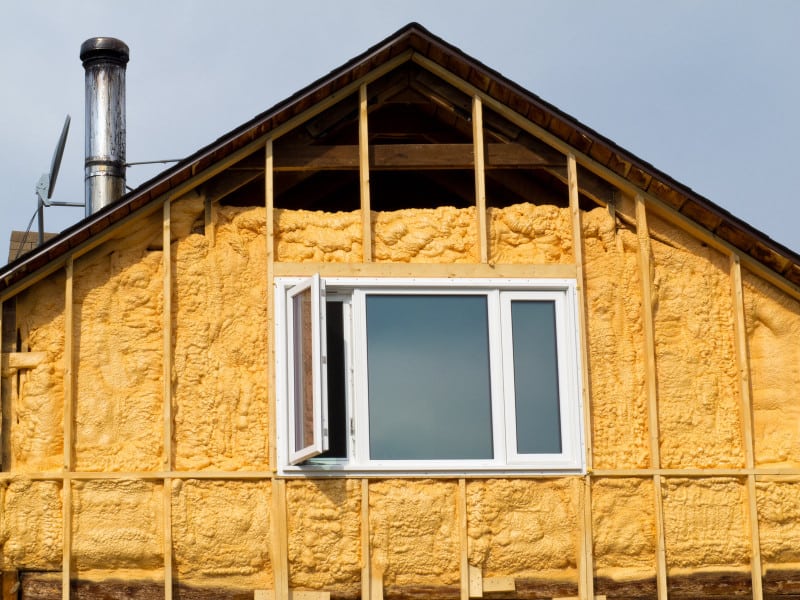
Spray foam insulation is a chemical-based type of insulation that is sprayed onto a surface, providing a barrier against heat, cold, and noise.
It is typically used in residential and commercial construction to insulate walls, ceilings, and floors.
It’s also one of the easiest forms of insulation to apply and has the best ability to get into very tight areas and for this reason is one of the best options for colder climates.
Pros
- Seals gaps and cracks to prevent air and moisture leakage
- Reduces energy costs by creating an effective thermal barrier
- Does not settle over time, maintaining its original shape
- Does not support the growth of mold or mildew
- Is not a breeding ground for insects
- Is environmentally friendly and does not contain harmful chemicals
- Water resistant
- Good for insulating new and old homes
- Excellent option for sealing small crevices
Cons
- More expensive than other options for both the materials and the labor costs
- Not easy to install yourself and therefore likely to require a professional to install it
- It can be difficult to remove if it is installed improperly
Fiberglass Insulation
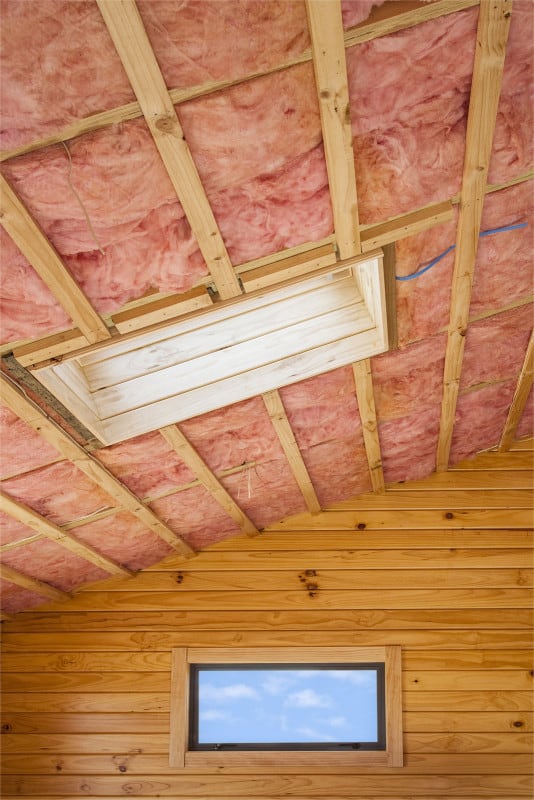
Fiberglass insulation is a type of insulation made from glass fibers. It is commonly used in both commercial and residential buildings.
Fiberglass insulation is effective at insulating against heat loss and is also a good acoustic insulator.
Pros
- Relatively inexpensive & affordable
- Easy to install (with some DIY knowledge)
- Effective at insulating against both heat and cold
- Available in a variety of R-values
Cons
- It is not as effective as other types of insulation in keeping a home warm in winter and cool in summer.
- It can be difficult to install in older homes.
- It can be damaged by water, which can lead to mold and mildew growth.
- It is not as environmentally friendly as some other options.
Cellulose Insulation
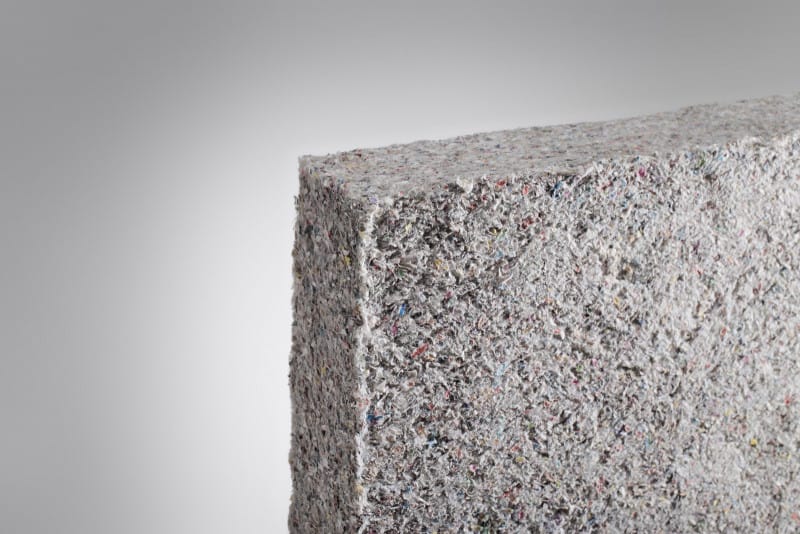
Cellulose insulation is a type of insulation made from plant fibers. It is a sustainable, renewable, and environmentally friendly option for insulation.
Pros
- Very affordable
- With loose-fill cellulose you can easily fill in without having to tear down walls
- Insect and vermin repellent
- Easily settles into wall and attic spaces and obstructions
Cons
- It is not as effective as other types of insulation
- It is not fireproof
- It can be susceptible to mold and mildew
- It can be difficult to install
Mineral Wool Insulation
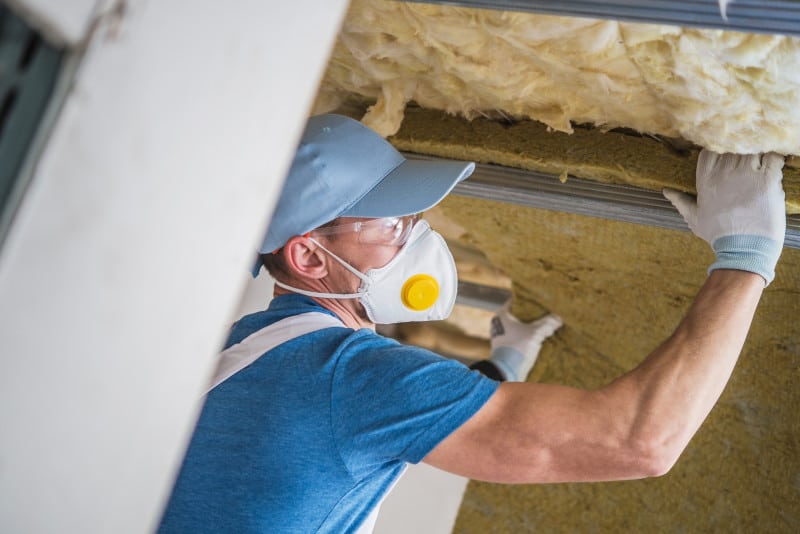
Mineral wool insulation is made from rock and slag fibers and is used to insulate homes and commercial buildings.
It is available in rolls or batts and can be used in a variety of applications, including walls, ceilings, and attics.
Pros
- Non-flammable
- Sound-proof
- Good thermal and acoustic insulation
- Water-resistant
- Resistant to mold and mildew
- Easy to install
Cons
- It can be difficult to find in some regions
- It is one of the more expensive insulation materials
- Some people are allergic to it
- It can be difficult to work with
- It does not have a very high R-value
What is the safest insulation for your home?
Mineral wool insulation is made from natural materials and does not contain any harmful chemicals. It is also fire resistant and does not produce any dangerous fumes when it is burned.
What is the most budget-friendly insulation for your home?
Fiberglass insulation is one of the most affordable types of insulation on the market. It is also effective at keeping your home warm in the winter and cool in the summer, making it a great choice for budget-conscious homeowners.
What is the best insulation if you live in a noisy area?
Mineral wool insulation is the best choice if you live in a noisy area because it is an excellent sound absorber.
It can help to reduce the amount of noise that comes through the walls and ceilings of your home, making it a more peaceful and relaxing place to live.
What is the most eco-friendly insulation for your home?
Cellulose insulation is made from recycled newsprint and other paper products. It is treated with boric acid to resist fire, mold, and insects.
Cellulose insulation has a high R-value, meaning it is very effective at insulating your home.
It is also one of the most eco-friendly insulation options because it is made from recycled materials and has a low impact on the environment.
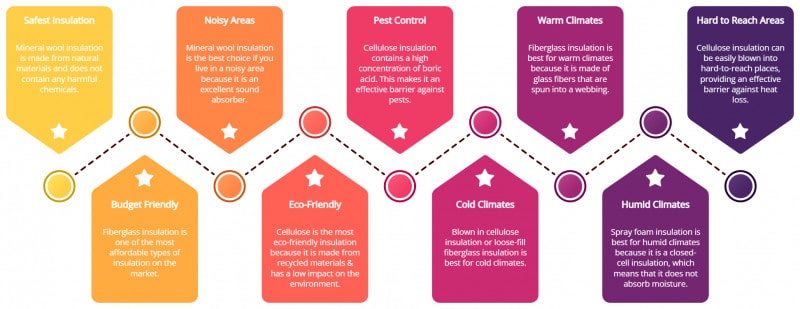
What is the best insulation for pest control?
Boric acid is a natural pest control agent that is effective against a wide variety of pests, including cockroaches, ants, and termites.
Cellulose insulation is made from wood pulp and other plant materials, and it contains a high concentration of boric acid. This makes it an effective barrier against pests.
What is the best insulation for cold climates?
Blown in cellulose insulation or loose-fill fiberglass insulation is best for cold climates because they are able to trap air by filling in cracks and crevices that helps to prevent heat from escaping during the winter.
What is the best insulation for warm climates?
Fiberglass insulation is best for warm climates because it is made of glass fibers that are spun into a webbing.
This webbing is then used to fill in the gaps between the studs in a wall. The glass fibers are able to reflect heat, which makes the insulation more effective in warm climates.
What is the best insulation for humid climates?
Spray foam insulation is best for humid climates because it is a closed-cell insulation, which means that it does not absorb moisture.
This is important because moisture can cause mold and mildew to grow, which can damage the insulation and the home.
What is the best insulation for ceilings, unfinished attic floors and open wall cavities?
One of the main benefits of blown-in cellulose insulation is that it can be easily blown into hard-to-reach places, providing an effective barrier against heat loss.
Blown-in cellulose is also a sustainable insulation material, made from recycled newspapers and other paper products.
Conclusion
There is no one-size-fits-all answer to the question of what the best insulation is for the home. The most important factors to consider are the climate in which you live, the type of home you have, and your budget.
In general, homes in colder climates need more insulation than homes in warmer climates. The type of home you have also affects the amount of insulation you need. For example, a brick home will need less insulation than a wood-frame home.
Your budget is another important factor to consider. Insulation is available in a variety of price ranges, from low-cost fiberglass to more expensive spray foam. The best insulation for your home will depend on your specific needs and budget.

